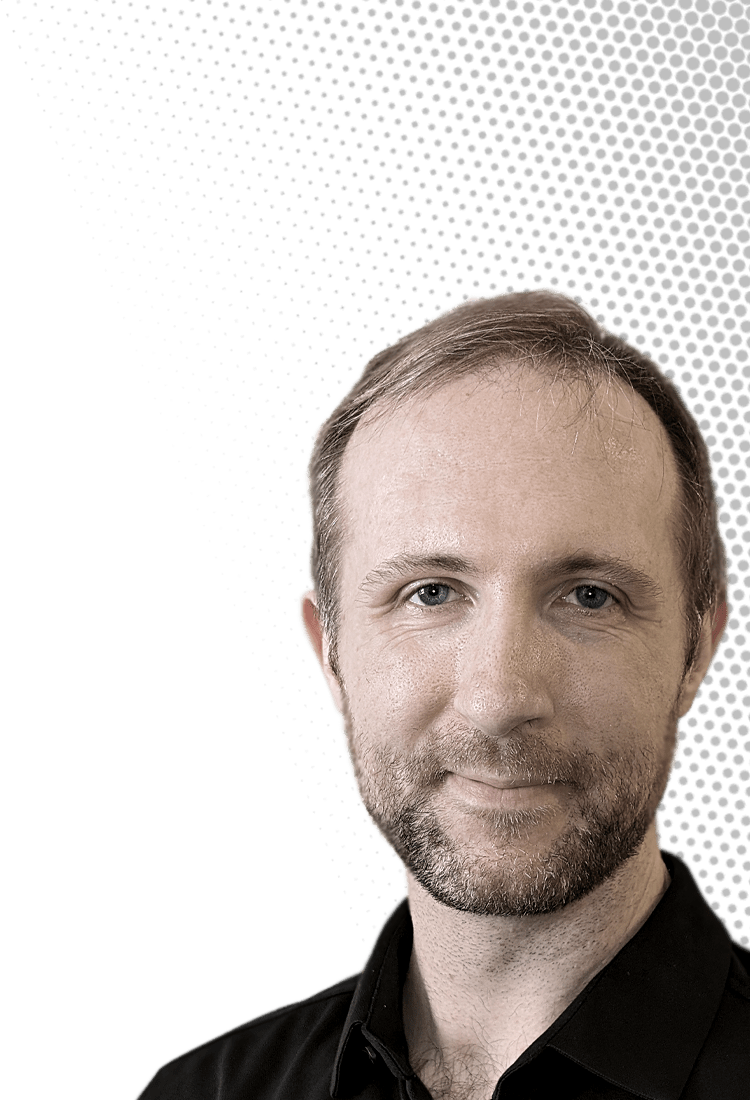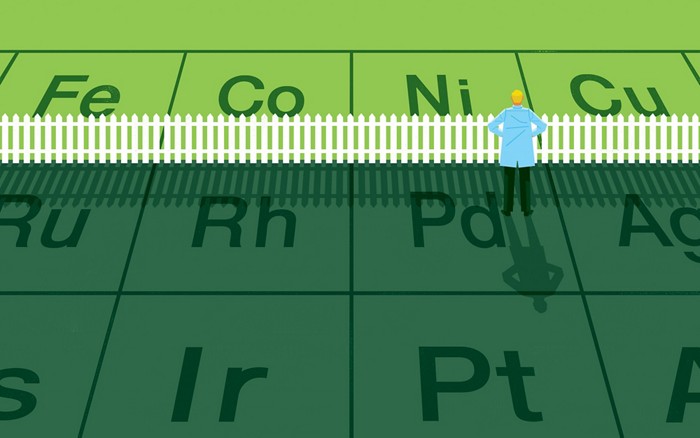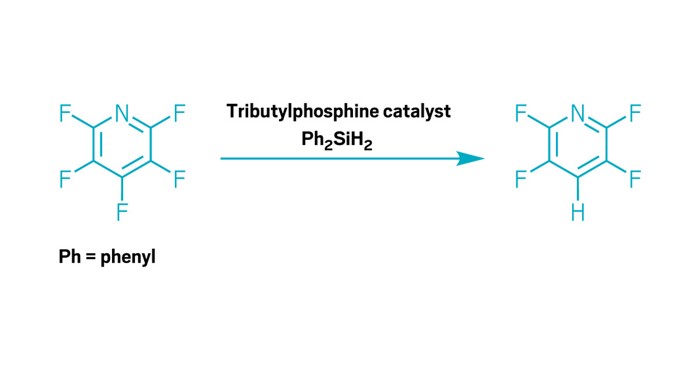Advertisement
Grab your lab coat. Let's get started
Welcome!
Welcome!
Create an account below to get 6 C&EN articles per month, receive newsletters and more - all free.
It seems this is your first time logging in online. Please enter the following information to continue.
As an ACS member you automatically get access to this site. All we need is few more details to create your reading experience.
Not you? Sign in with a different account.
Not you? Sign in with a different account.
ERROR 1
ERROR 1
ERROR 2
ERROR 2
ERROR 2
ERROR 2
ERROR 2
Password and Confirm password must match.
If you have an ACS member number, please enter it here so we can link this account to your membership. (optional)
ERROR 2
ACS values your privacy. By submitting your information, you are gaining access to C&EN and subscribing to our weekly newsletter. We use the information you provide to make your reading experience better, and we will never sell your data to third party members.


Julian West is on a mission to put iron to work as a photocatalyst. Precious metals like iridium and ruthenium are prized for their photocatalytic prowess, but researchers are increasingly trying to recruit cheaper and more abundant metals to the cause. In many ways, iron would be ideal: it’s widely available, low cost, and essentially nontoxic, and it has a relatively small environmental footprint. But its photochemistry can be finicky and its reactivity difficult to control.
Vitals
Current affiliation: Rice University
Age: 32
PhD alma mater: Princeton University
Hometown: Edmonton, Alberta
How I’ve faced adversity in my career: “I was very burned out in the middle of my graduate studies from overwork and thought seriously about leaving the program. My adviser, Erik Sorensen, really supported me in finding a sustainable work-life balance at this point, and this was the key for finding the major discoveries in my thesis and deciding to stay in chemistry.”
My role model is: “The music producer Jack Antonoff, because he helps a wide range of creative people realize their visions without taking the spotlight or causing drama.”
At Rice University, West is meeting that challenge by turning iron into a useful photocatalyst for organic reactions used in drug discovery, materials science, and more. “He’s an important part of a growing movement to get iron and other base metals to behave like precious metals,” says Erik J. Sorenson, West’s former graduate adviser at Princeton University.
West became fascinated with the versatility of light-driven reactions as an undergraduate working with Glenn Sammis at the University of British Columbia. “It’s like you enter this entirely new world, this whole other side of chemical reactivity that’s just a switch away,” West says.
He made a detour into electrochemistry for his postdoctoral work with Harry B. Gray and Brian Stoltz at the California Institute of Technology, focusing on an iron-nickel electrocatalyst to oxidize C–H bonds. But West came back to the light when he established his own group at Rice in 2019. “His current program is a nice hybrid of every single aspect of his training,” Sammis says. “He’s definitely unique in what he is doing.”
West’s group has found that simple iron salts and thiol cocatalysts can work together to remove CO2 from carboxylic acids and leave a new C–H group in its place. This decarboxylation reaction depends on a light-driven process called ligand-to-metal charge transfer, which exploits iron’s facility with single-electron redox chemistry. The metal readily bounces back and forth between its +2 and +3 oxidation states and rapidly exchanges its ligands to keep the catalytic cycle turning smoothly. The process is quite selective because it depends on the photochemical reactivity of an Fe–O bond—meaning that other easily oxidized groups in the molecule are left untouched.
West extended this decarboxylation approach to generate fluoroalkyl radicals from fluoroalkyl carboxylic acids. Adding these radicals to alkenes offers a mild and straightforward way to incorporate useful fluorinated groups into a wide range of molecules. Groups with inert C–F bonds can improve the durability of coatings, for example, or extend the lifetime of drugs in the body.
Previous fluoroalkylation reactions often rely on exotic, reactive, and expensive reagents and have largely been restricted to adding trifluoromethyl groups. In contrast, West’s method can add pretty much any kind of fluoroalkyl group by starting with the groups’ readily available carboxylic acids. “It opens up the ability to make completely different sorts of molecules in this fluorocarbon space,” he says.
Advertisement
Much of West’s work draws inspiration from biological catalysts such as cytochrome P450 hydroxylase, which uses its iron-oxo center to turn C–H groups into C–OH through what’s called a radical rebound mechanism. His team has deployed reactions with a similar rebound mechanism by using photocatalytic iron salts or manganese complexes to modify unactivated alkenes with groups such as azides and halogens. “That same one-electron redox process is exactly what nature is doing in our own livers right now,” he says.
West is also using biological catalysts directly by applying vitamin B12 as a light-activated catalyst to open epoxide rings to make alcohols, for instance. In more conventional reactions, this conversion sometimes requires a strong hydride reagent that may damage other functional groups in the molecule. But vitamin B12 contains a cobalt center that, like iron, loves to take part in single-electron reactions. The biomolecule effectively offers a much gentler way to open the epoxide, which could be useful for putting the finishing touches to complex molecules in drug discovery programs.
For now, West and his group are largely focused on exploiting the photochemistry behind their iron-catalyzed reactions in a wider array of organic transformations. “A lot of these processes and reactivities seem to be really general,” he says. “My biggest goal right now is to try to support people in these explorations and really help them develop these new directions.”
Catalysis
Julian West
This organic chemist harnesses the catalytic power of iron with light
by Mark Peplow, special to C&EN
May 17, 2024
| A version of this story appeared in
Volume 102, Issue 15

Credit: Courtesy of Julian West/C&EN | Julian West
Vitals
Current affiliation: Rice University
Age: 32
PhD alma mater: University of British Columbia
Hometown: Edmonton, Alberta
How I’ve faced adversity in my career: “I was very burned out in the middle of my graduate studies from overwork and thought seriously about leaving the program. My adviser, Erik Sorensen, really supported me in finding a sustainable work-life balance at this point, and this was the key for finding the major discoveries in my thesis and deciding to stay in chemistry.”
My role model is: “The music producer Jack Antonoff, because he helps a wide range of creative people realize their visions without taking the spotlight or causing drama.”
Julian West is on a mission to put iron to work as a photocatalyst. Precious metals like iridium and ruthenium are prized for their photocatalytic prowess, but researchers are increasingly trying to recruit cheaper and more abundant metals to the cause. In many ways, iron would be ideal: it’s widely available, low cost, and essentially nontoxic, and it has a relatively small environmental footprint. But its photochemistry can be finicky and its reactivity difficult to control.
At Rice University, West is meeting that challenge by turning iron into a useful photocatalyst for organic reactions used in drug discovery, materials science, and more. “He’s an important part of a growing movement to get iron and other base metals to behave like precious metals,” says Erik J. Sorenson, West’s former graduate adviser at Princeton University.
West became fascinated with the versatility of light-driven reactions as an undergraduate working with Glenn Sammis at the University of British Columbia. “It’s like you enter this entirely new world, this whole other side of chemical reactivity that’s just a switch away,” West says.
He made a detour into electrochemistry for his postdoctoral work with Harry B. Gray and Brian Stoltz at the California Institute of Technology, focusing on an iron-nickel electrocatalyst to oxidize C–H bonds. But West came back to the light when he established his own group at Rice in 2019. “His current program is a nice hybrid of every single aspect of his training,” Sammis says. “He’s definitely unique in what he is doing.”
West’s group has found that simple iron salts and thiol cocatalysts can work together to remove CO2 from carboxylic acids and leave a new C–H group in its place. This decarboxylation reaction depends on a light-driven process called ligand-to-metal charge transfer, which exploits iron’s facility with single-electron redox chemistry. The metal readily bounces back and forth between its +2 and +3 oxidation states and rapidly exchanges its ligands to keep the catalytic cycle turning smoothly. The process is quite selective because it depends on the photochemical reactivity of an Fe–O bond—meaning that other easily oxidized groups in the molecule are left untouched.
West extended this decarboxylation approach to generate fluoroalkyl radicals from fluoroalkyl carboxylic acids. Adding these radicals to alkenes offers a mild and straightforward way to incorporate useful fluorinated groups into a wide range of molecules. Groups with inert C–F bonds can improve the durability of coatings, for example, or extend the lifetime of drugs in the body.
Previous fluoroalkylation reactions often rely on exotic, reactive, and expensive reagents and have largely been restricted to adding trifluoromethyl groups. In contrast, West’s method can add pretty much any kind of fluoroalkyl group by starting with the groups’ readily available carboxylic acids. “It opens up the ability to make completely different sorts of molecules in this fluorocarbon space,” he says.
Much of West’s work draws inspiration from biological catalysts such as cytochrome P450 hydroxylase, which uses its iron-oxo center to turn C–H groups into C–OH through what’s called a radical rebound mechanism. His team has deployed reactions with a similar rebound mechanism by using photocatalytic iron salts or manganese complexes to modify unactivated alkenes with groups such as azides and halogens. “That same one-electron redox process is exactly what nature is doing in our own livers right now,” he says.
West is also using biological catalysts directly by applying vitamin B12as a light-activated catalyst to open epoxide rings to make alcohols, for instance. In more conventional reactions, this conversion sometimes requires a strong hydride reagent that may damage other functional groups in the molecule. But vitamin B12contains a cobalt center that, like iron, loves to take part in single-electron reactions. The biomolecule effectively offers a much gentler way to open the epoxide, which could be useful for putting the finishing touches to complex molecules in drug discovery programs.
For now, West and his group are largely focused on exploiting the photochemistry behind their iron-catalysed reactions in a wider array of organic transformations. “A lot of these processes and reactivities seem to be really general,” he says. “My biggest goal right now is to try to support people in these explorations and really help them develop these new directions.”






Join the conversation
Contact the reporter
Submit a Letter to the Editor for publication
Engage with us on Twitter